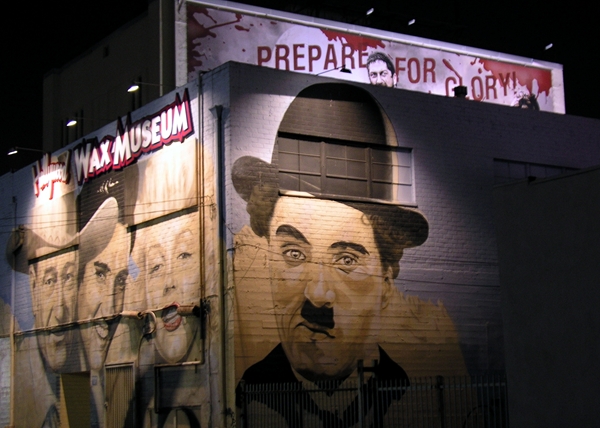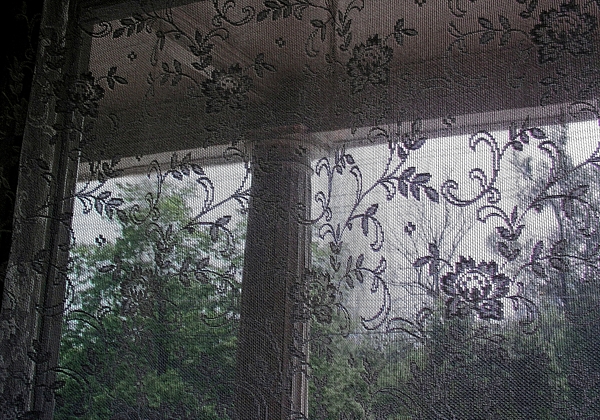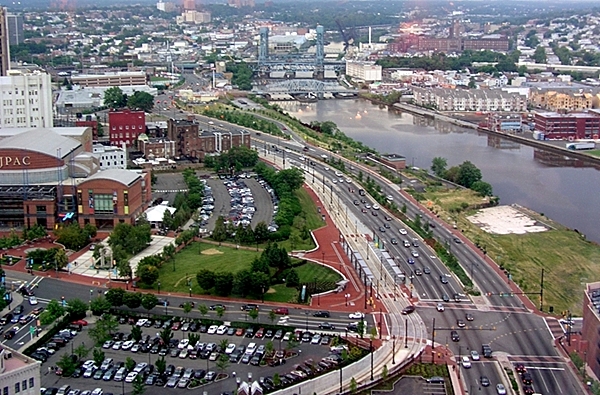I’ve always been deeply ambivalent about the real place called Hollywood and about Los Angeles in general. When I first flew out for a visit, about 1970, I had a window seat and during our low approach to LAX I looked out over mile after flat mile of superblocks divided by major streets, all viewed as if through a light chartreuse filter. This was before clean air laws and mandated emissions controls on cars. The air burned my eyes on two occasions during my week-long stay, and I wondered how so many people could live there seemingly satisfied with conditions I could hardly tolerate. Fast forward about 40 years and I’m still not in love with L.A., but I do manage to have fun when I’m there.
This photo was snapped in February 2007 during the week before the Oscars were handed out. Hollywood Boulevard was closed to traffic for many blocks around the Kodak Theater, creating snarls and backups on all the other major roads, but I was able to find and park in one of three lots adjoining the back of the Hollywood Wax Museum so I could attend one of the screenings in a festival showcasing new Italian films at Grauman’s Chinese, on the same crowded block as the Kodak. When I got back to the car, night had fallen and the lights were on, and I knew I had to preserve this vision of Hollywood, a company town where billboards touting new product seem bigger and more numerous than anywhere else in the world, and where every actor hopes to achieve the immortality of John Wayne, Elvis Presley, Marilyn Monroe, Charlie Chaplin. I was especially taken with the way the museum’s mural incorporates the utility lines on the sides of the building. Nothing gets in the way of promotion in Tinseltown.

Perhaps my life as a photographer would be easier, or at least lighter, if I were more comfortable with certain conventions. I well remember when photographs weren’t considered serious unless they were black and white and presented in a white or cream mat behind glass inside a black wood or metal frame. Later, natural wood frames became acceptable, and now white wood frames are seen everywhere. I understand some of the reasoning. You’re supposed to be presenting the photo, featuring it while protecting it, and there should be nothing distractingly different in a room that contains eight or ten or a dozen photographs. Each image should be a focus and nothing should take away from it. I do get that. But there are so many options available today that I can’t accept uniformity as any kind of operating principal. Not with photographs being printed on metal, on plastic, on canvas, and on other media. And so I wrestle with deciding how I want to see every particular image on a wall.
Below is a photograph I took in southwestern Pennsylvania only a few miles north of the border with Maryland. We are looking out to the porch and trees beyond a roadway from inside the Stone Inn, a circa 1822 building on the Braddock Road, which dates from the 1750s and was incorporated into one of the nation’s first improved highways built by the federal government. Started in the early 1800s, what became known as the National Road carried multitudes of settlers and travelers from Baltimore west to Ohio. Now a large and comfortable restaurant with a bed and breakfast operation upstairs, the inn has always been a stopping place for rest and hospitality. I found the dining room to be one of those places with a pleasant, calculated historic feel but no particular antique vibe. I found the outside view compelling. The thrill, if you feel it, is in looking out over a byway that’s been busy with commerce every single day for centuries and a landscape that has hardly changed except as it grew and died back and then renewed itself. I wanted to somehow capture that, without being too literal or stuck in any particular year.
After much debate with myself, I had this photograph printed large and on canvas, and it drew many favorable comments in my first solo show of my work, in June at Made With Love Artisan Bakery & Cafe in Downtown Jersey City. Looking out across time is someting many of us enjoy doing, and this will add an architectural element to any wall it’s on.

I’ll always photograph panoramas like this, which I call “The Passaic River Flows: Indians, Farmers, then Industrialists and Neglect, Now Rebirth.” Such landscapes contain stories and relationships that words and statistics piled together, even with great skill, cannot convey. The Passaic River meanders along through New Jersey for 80 miles, and its Great Falls in Paterson once ran that early city’s silk mills and are still considered a scenic wonder, but just before the Passaic empties into Newark Bay it flows through one of the most urbanized and industrialized areas in the nation.
Only 400 years ago, before Henry Hudson and the Dutch came, the Lenni Lenape Indians fished its waters. Only since the early 1970s have there been efforts to clean up the river, and the water quality is still not great, though high school and club rowing crews have been using it for decades. Certainly no commercial fishing is allowed and no one is supposed to eat anything they catch in the lower stretch of the river. For more than a hundred years factories lined the river, operating 24/7, and dumped all of their waste into the water. Just google Dioxin and Diamond Shamrock and Agent Orange for a few facts about what still lies in the river’s sediments.
In my photograph, Newark is on the left, Harrison on the right. Newark has redeveloped many acres over the past decade or so; the New Jersey Performing Arts Center is visible, as is an improved McCarter Highway and a light rail system. Harrison is busy, too, with condos and commercial buildings going up and a world-class soccer stadium under construction for the Red Bulls where acres of old red brick factory buildings once stood.
I don’t know of any other American landscape that’s gone from pristine ecosystem to total heedless exploitation and degradation, then been an abandoned wasteland for decades before ultimately seeing as much rebirth.



